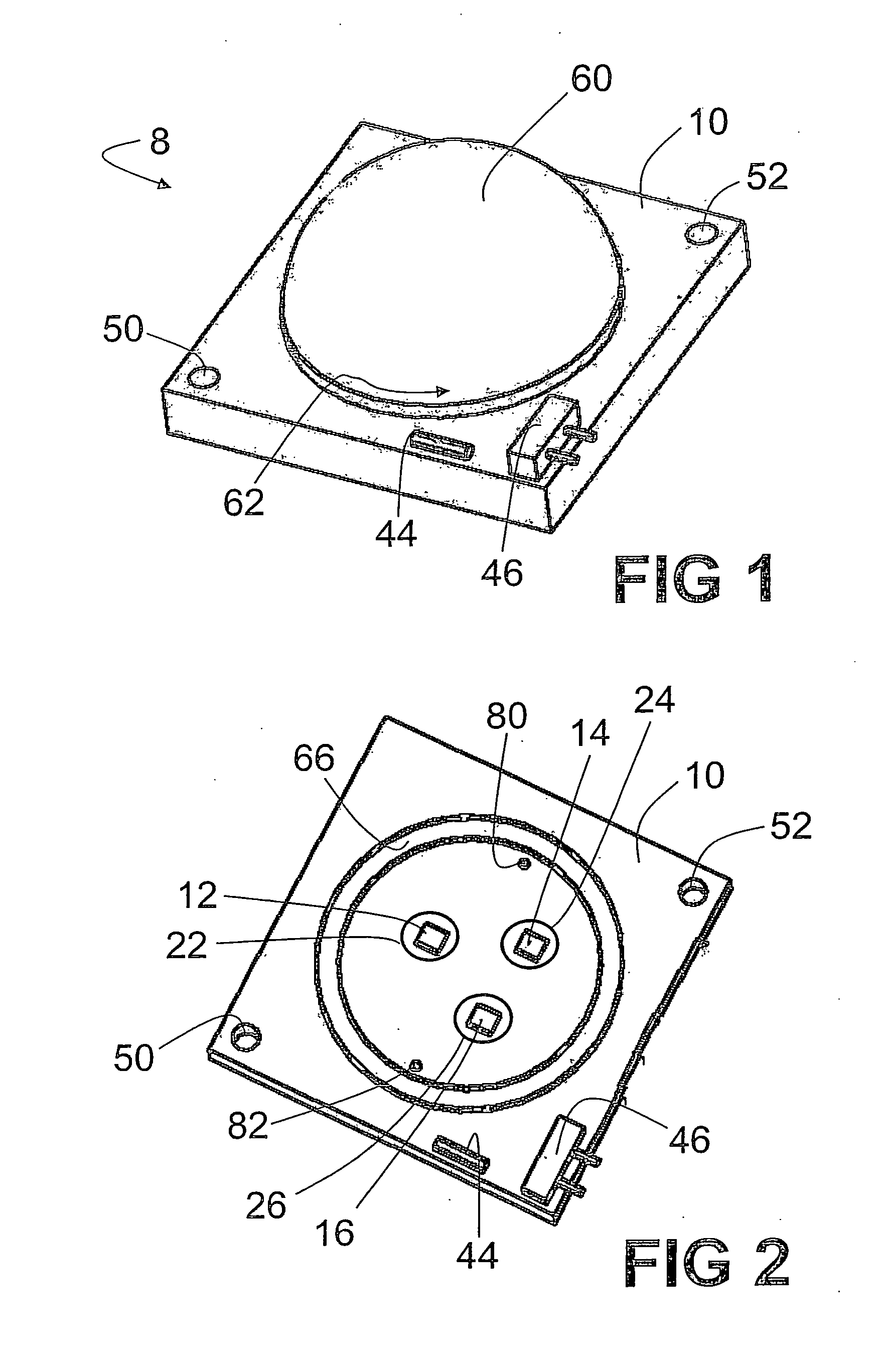Red and yellow phosphor-converted LEDs for signal applications
a technology of red and yellow phosphor and leds, applied in the field of new, can solve the problems of increasing the brightness of the signal, increasing the temperature variation, and exceeding the color point specification limit for the specific color
- Summary
- Abstract
- Description
- Claims
- Application Information
AI Technical Summary
Benefits of technology
Problems solved by technology
Method used
Image
Examples
examples
[0082] Various model systems using phosphor blends are listed in Table 1. A filter indicated, whenever present. The CIE color coordinates were determined using the emission spectra from 415 to 750 nm. All examples use near UV exitation with a maximum from about 350 nm to 410 nm.
TABLE 1Ex-CompositionamplexyColorFilter(by spectral weight)10.6950.303Rednone50% MFG, balanceK2[Ti0.96Mn0.04F6]20.6990.296Rednone95% MFG, balanceGd0.95Eu0.05Al3B4O1230.6900.301Rednone90% MFG, balanceGd0.95Eu0.05Al3B4O1240.5470.446Yellownone55% Gd0.95Eu0.05Al3B4O12,balanceCa0.99Ce0.01Al0.99Mg0.01SiN350.6940.305Rednone80% Gd0.95Eu0.05Al3B4O12,balance MFG60.5420.448YellowCal-100% HALOColor90Yellow70.5430.448YellowStraw100% HALO80.5480.448YellowCanary100% HALO90.5560.439YellowDeep100% HALOStraw100.5740.420YellowMedium100% HALOAmber
[0083] The color x, y coordinates of these examples in the 1931 CIE chromaticity diagram are shown in FIG. 6. As can be seen, these samples lie within the respective ITE color bins fo...
PUM
 Login to View More
Login to View More Abstract
Description
Claims
Application Information
 Login to View More
Login to View More - R&D
- Intellectual Property
- Life Sciences
- Materials
- Tech Scout
- Unparalleled Data Quality
- Higher Quality Content
- 60% Fewer Hallucinations
Browse by: Latest US Patents, China's latest patents, Technical Efficacy Thesaurus, Application Domain, Technology Topic, Popular Technical Reports.
© 2025 PatSnap. All rights reserved.Legal|Privacy policy|Modern Slavery Act Transparency Statement|Sitemap|About US| Contact US: help@patsnap.com



